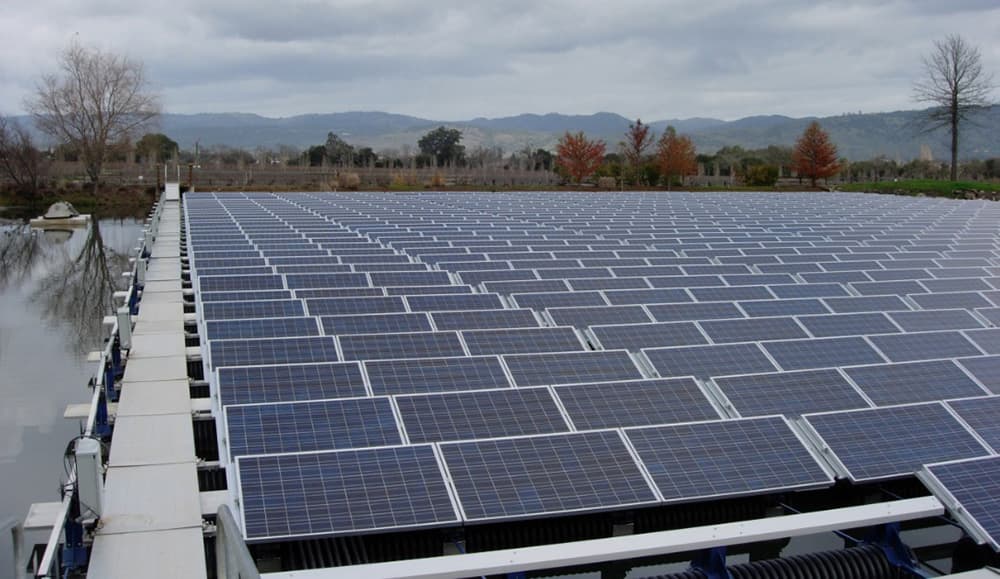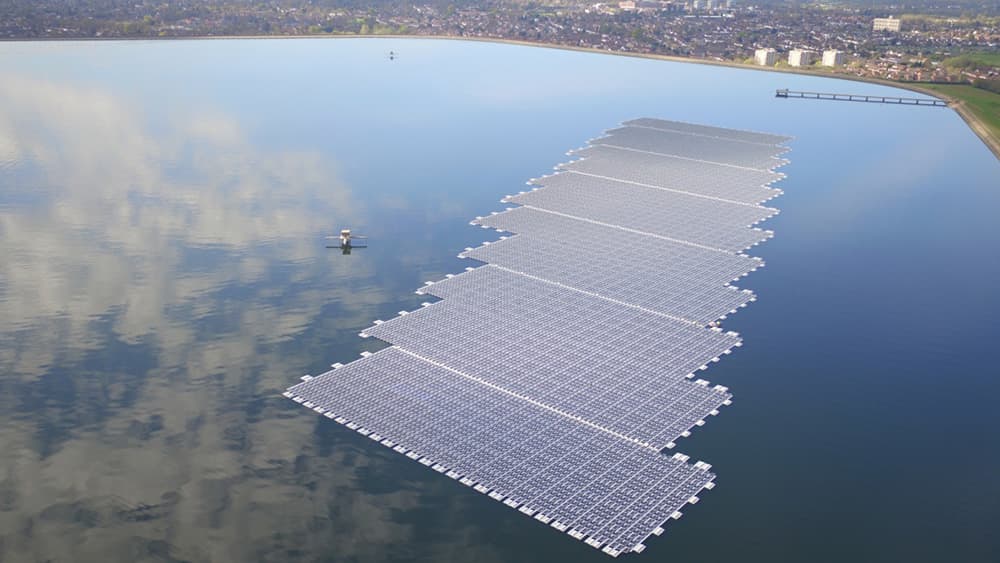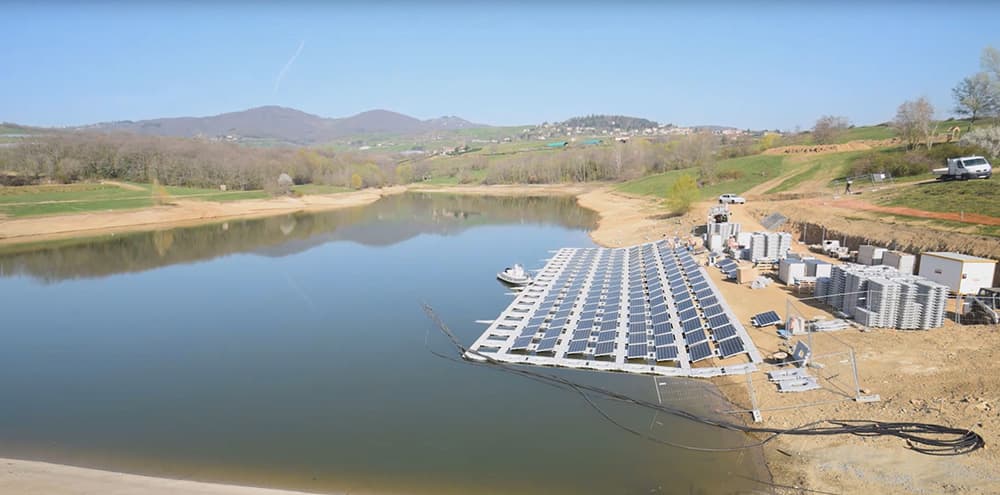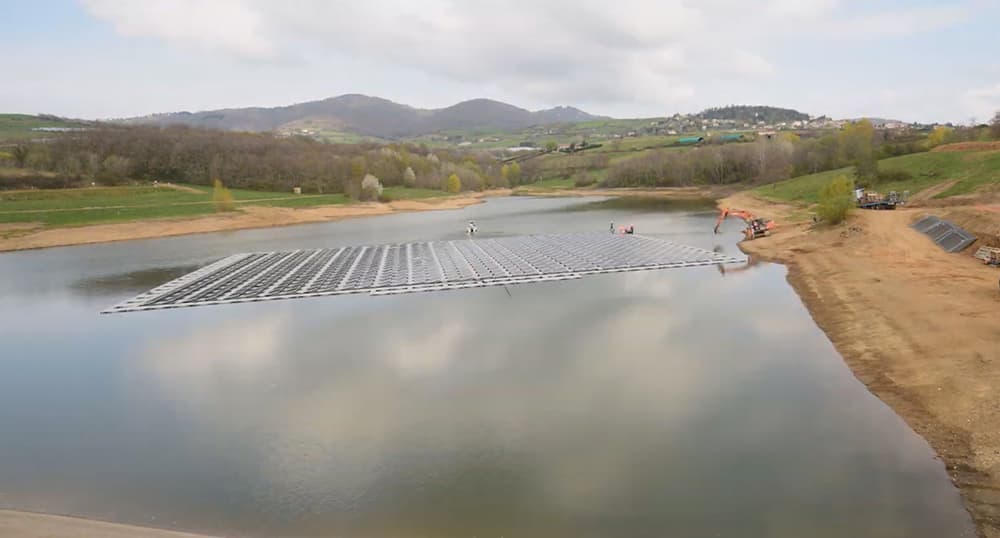Building a Floating Solar Farm
- Youtube Views 828 VIDEO VIEWS
IN many areas, the price of solar and wind energy has now dropped below that of electricity produced by fossil fuels, providing a strong economic incentive to invest in clean technologies that limit the impact of human-made climate change.
Although the bulk of renewable energy still comes from wind and hydro sources, solar power is seen as being one of the fastest growing energy segments.

Above: Floating solar is being increasingly seen as a good way to use remote lakes and reservoirs (image courtesy of Wikimedia).
One of the main objections and barriers to solar energy is the dedication of valuable land which could be used for agriculture, infrastructure or housing.
An increasingly attractive alternative is to install photovoltaic (PV) panels on lakes and reservoirs.
While the technology for floating photovoltaics was first pioneered in the late 2000s, mass uptake has only began in the last five years with the technology now being trialed on a large scale.

Above: Europe's then-largest floating solar plant was completed near London in 2016 (image courtesy of Lightsource).
Advantages of this approach include efficient use of land, reducing evaporation from reservoirs, and the possibility of using the water for cooling the PV panel's electrical systems.
In the UK, 23,000 PV panels were installed on the surface of the Queen Elizabeth II reservoir near west London to power the adjacent water purification plant.

Above: Segments of the floating platforms being assembled on the banks of a lake (image courtesy of Devisubox).
Smaller operations are also increasingly common - French renewable energy company CNR has been installing smaller plants all across central France.
Their latest footage shows workers assembling a floating platform and covering it with PV cells on the Lac de la Madone reservoir.

Above: Even small projects like this can help bring sustainable energy to rural communities (image courtesy of Devisubox).
The 2,500 square metre platform holds 630 PV panels and produces 266 MWh/year, while a nearby car park, which has been fitted with PV shading panels, produces 540 MWh/year.
While that is only enough to supply electricity to around 125 households, modest local energy plants like this are a good way of producing renewable electricity for small, rural communities.








